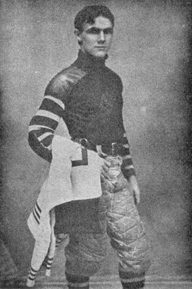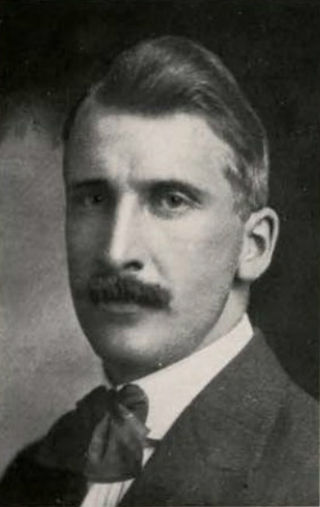Related Research Articles

Greensboro is a city in and the county seat of Guilford County, North Carolina, United States. It is the third-most populous city in North Carolina after Charlotte and Raleigh, the 69th-most populous city in the United States, and the most populous city in the Piedmont Triad metropolitan region. At the 2020 census, its population was 299,035; at the 2022 census estimate, its population was 301,115. Three major interstate highways in the Piedmont region of central North Carolina were built to intersect at this city.

Guilford County is a county located in the U.S. state of North Carolina. As of the 2020 census, the population is 541,299, making it the third-most populous county in North Carolina. The county seat, and largest municipality, is Greensboro. Since 1938, an additional county court has been located in High Point. The county was formed in 1771. Guilford County is included in the Greensboro-High Point, NC Metropolitan Statistical Area, which is also included in the Greensboro–Winston-Salem–High Point, NC Combined Statistical Area.

Guilford College is a private liberal arts college in Greensboro, North Carolina. Guilford has both traditional students and students who attend its Center for Continuing Education (CCE). Founded in 1837 by members of the Religious Society of Friends (Quakers), Guilford's program offerings include such majors as Peace and Conflict Studies and Community and Justice Studies, both rooted in the college's history as a Quaker institution. Its campus has been considered a National Historic District by the United States Department of the Interior since 1990.

The Piedmont Triad is a metropolitan region in the north-central part of the U.S. state of North Carolina anchored by three cities: Greensboro, Winston-Salem, and High Point. This close group of cities lies in the Piedmont geographical region of the United States and forms the basis of the Greensboro–Winston-Salem–High Point, NC Combined Statistical Area. As of 2012, the Piedmont Triad has an estimated population of 1,611,243 making it the 33rd largest combined statistical area in the United States.

Iowa Wesleyan University was a private university in Mount Pleasant, Iowa, United States. It was Iowa's first co-educational institution of higher learning and the oldest of its type west of the Mississippi River. The institution was affiliated with the United Methodist Church. It closed at the end of the 2022–23 academic year due to financial challenges.

Henry Clifford "Doc" Carlson was an American basketball coach and football player. He is a Naismith Basketball Hall of Fame inductee as the men's college basketball coach of his alma mater, the University of Pittsburgh, from 1922 to 1953. At Pitt he compiled a record of 367–247 record (.595). His 1927–28 team finished the season with a 21–0 record and was retroactively named the national champion by the Helms Athletic Foundation and the Premo-Porretta Power Poll; Carlson's Panthers would receive retroactive recognition as the Helms national champion for the 1929–30 season as well. Carlson also led Pitt to the Final Four in 1941. As a student at the university, Carlson was also a First Team All-American end on Pitt's football team under coach "Pop" Warner. Carlson also lettered in basketball and baseball.

William Penn University is a private university in Oskaloosa, Iowa. It was founded by members of the Religious Society of Friends (Quakers) in 1873 as Penn College. In 1933, the name was changed to William Penn College, and finally to William Penn University in 2000.

John Burton Rix was an American football and basketball player and coach. He served as the head football coach at Austin College (1909–1910), Southwestern University (1914–1916), Southern Methodist University (1917–1921), the University of Miami (1929), compiling a career college football coaching record of 39–34–11. Rix was also the head basketball coach at the University of Texas at Austin (1911–1912) and at Southern Methodist (1917–1921), tallying a career college basketball mark of 29–37.

Forrest Eugene "Cap" Craver Sr. was an American college football player and coach and athletic director who helped to pioneer physical education programs at the collegiate level including the introduction of intramural sports.

Wilfred Charles Bleamaster was an American football and basketball coach. He served as the head football coach at Carroll College—now Carroll University—in Waukesha, Wisconsin from 1909 to 1911, Alma College from 1912 to 1915, and the University of Idaho from 1916 to 1917, and Albany College—now known as Lewis & Clark College—from 1926 to 1927. Bleamaster was also the head basketball coach at Alma from 1912 to 1916 and at Idaho for the 1918–19 season, tallying a career college basketball mark of 28–29.
The United States Intercollegiate Lacrosse Association is an association of member institutions and organizations with college lacrosse programs at all levels of competition, including the three NCAA divisions and non-NCAA schools, at both the varsity and club levels for men and women. The association traces its history through predecessor organizations back to 1882, although it received its present name and became a governing body with unlimited membership in 1926. The association is based in Louisville, Kentucky.

The modern Maryland Terrapins football program representing the University of Maryland traces its lineage to the team first formed at what was then the Maryland Agricultural College (MAC) in 1892. In the initial years, due to the rudimentary state of intercollegiate athletics and interstate travel, all games were played against local colleges, high schools, and athletic clubs.

The Kansas Wesleyan Coyotes are the athletic teams that represent Kansas Wesleyan University, located in Salina, Kansas, in intercollegiate athletics as a member of the National Association of Intercollegiate Athletics (NAIA), primarily competing in the Kansas Collegiate Athletic Conference (KCAC) since the 1902–03 academic year.
The Guilford Quakers are the athletic teams that represent Guilford College, located in Greensboro, North Carolina, United States in NCAA Division III intercollegiate sports. The Quakers compete as members of the Old Dominion Athletic Conference. Altogether, Guilford sponsors 18 sports: nine each for men and women, respectively.

The Haverford Fords compete at the NCAA Division III level in the Centennial Conference. The program has a modest history in collegiate athletics. Haverford boasts the only varsity cricket team in the United States. Its men's and women's track and field and cross country teams are perennial powerhouses in their division. The outdoor track and field team won the first 16 Centennial Conference championships, and men's cross country has won all but two Centennial Conference championships. The soccer team is among the nation's oldest, having won its first intercollegiate match in 1905 against Harvard College. The lacrosse team has placed well nationally in the NCAA championships, while Haverford's fencing team has competed since the early 1930s.
Gregory Jackson was an American basketball player. He won a collegiate national championship at Guilford College and later played in the National Basketball Association (NBA).

Arthur Charles "Bull" Tipton was an American football player and United States Army officer. He was a consensus first-team selection to the 1904 College Football All-America Team.
The 1917 Davidson Wildcats football team represented Davidson University in the 1917 college football season. Led by third year coach Bill Fetzer, the Wildcats competed as a member of the South Atlantic Intercollegiate Athletic Association (SAIAA). Despite a record of 6–4, some would call Davidson the second best southern team that year. Davidson defeated Auburn 21 to 7, in one of the great upsets in Southern football history, and scored the most on the 1917 Georgia Tech Golden Tornado, for many years considered the greatest football team the South ever produced, in a 32 to 10 loss. Following the Auburn game the Davidson team was first referred to as "the Wildcats.
The 1918 North Carolina SATC football team informally represented the University of North Carolina in the 1918 college football season. The University of North Carolina (UNC) does not officially recognize these games in their record books because they were organized under the auspices of the Student Army Training Corps rather than the school itself. Because of this, no varsity letters were given for the season.
References
- ↑ "Guilford To Open Her Football Season Today". Greensboro Daily News. October 23, 1915. Retrieved August 9, 2022.
- ↑ The Quaker. 1916. p. 32. Retrieved August 9, 2022.
- ↑ "The Quaker". North Carolina Yearbooks: 57. 1918.
- ↑ "Guilford Made Good On Football Return". Greensboro Daily News. December 9, 1917. Retrieved August 9, 2022.
- ↑ "Quakers Enter Football Arena This Season". The Charlotte News. October 1, 1915. Retrieved August 9, 2022.
- ↑ "Guilford Has First Football Since 1904". The Farmer and Mechanic. November 2, 1904. Retrieved August 9, 2022.
- ↑ "High Point Plays Guilford College". High Point Enterprise. November 25, 1915. Retrieved August 9, 2022.
- ↑ "High Point Easy For Collegians". High Point Enterprise. November 26, 1915. Retrieved August 9, 2022.
- ↑ "Archived copy" (PDF). Archived from the original (PDF) on August 8, 2022. Retrieved May 22, 2020.
{{cite web}}: CS1 maint: archived copy as title (link)